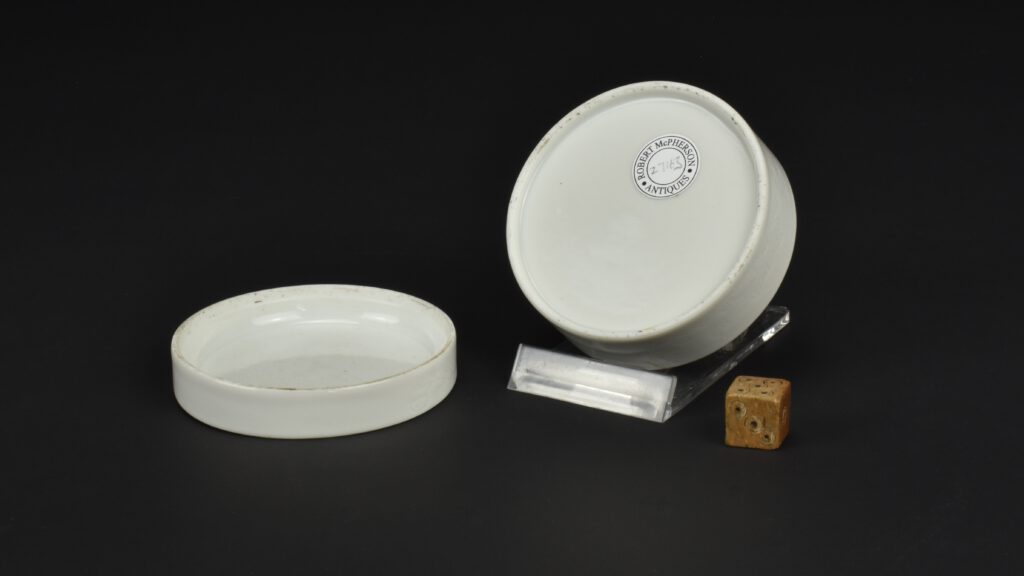
An 18th Century Anhua Decorated Porcelain Seal-Paste Box and Cover
An 18th Century Anhua Decorated Porcelain Seal-Paste Box and Cover. This seal-paste box and cover dates to the Yongzheng to early Qianlong period c.1730-1750. This Scholar’s object would have been used for the vermillion red paste that was applied to seals, it could then be imprinted on documents, calligraphy, or paintings. The decoration of the 18th Century box and cover is finely executed, the design is of chrysanthemum incised into the leather-hard clay and then glazed. The glaze, with its pale bluish-grey tint, is at a slightly greater depth in the incised lines, so the design quite clearly visible.
The term `Scholar’s object` refers to something used by a Chinese scholar in his or her studio, it includes everything from scroll-tables, desks, screens, and chairs to the smaller objects found on the scholar’s desk. The material used for these desk objects varied greatly, from bamboo to stone, ivory, wood, and metal, but ceramics were by far the most commonly used material, even though ceramics rated lowest in ranking of importance. Bamboo, ivory, or wood might not be durable enough and metal was sometimes too heavy but ceramic objects could be thrown or moulded into an infinite variety of forms. Most of the objects made centred around the functions of writing and painting. Brushpots of different sizes and shape were needed to take the various types of brush, the same applies to brush rests. Water-droppers for adding water to dry solid ink when it was ground on an inkstone, as well as the inkstones themselves were all needed, as were water-pots and brush-washers. All of these could be made of porcelain. But these were not merely functional items, they conveyed symbolic mean, often enhancing scholarly virtues and the wish for longevity. They were meant to inspire the writer, poet, and artist but it is clear they could also exhibit a great sense of humour, sometimes having almost childlike quality. Objects for the scholar’s desk were made from many different ceramic bodies, during the Song Dynasty (960-1279) Qingbai porcelain was most frequently used, often in moulded forms. Blue and white porcelain objects became popular from the Ming dynasty onwards. By 17th and early 18th century, Blanc de Chine, and biscuit porcelain with coloured glazes such as green, aubergine or turquoise were also popular. Some of these objects were shipped to Europe at the time. The records of the Dashwood, a British trading vessel, were sold at in September 1703, this Supra-cargo, include 10,800 `square toys`. These were Blanc de Chine seals, I have bought and sold many of these over the years. Some are uncut, some have mould seals to the base and could have been used in China, there seals that were engraved, its likely these were not exported. However, the label, ‘square toys’, shows that in Britain they were seen as novelties to show friends and to be on display in cabinets. I’m not sure if the Chinese scholarly class would have approved.
SOLD
- Condition
- A small stained crack to the side of the rim on the base.
- Size
- 6.6 cm (diameter) 2 1/2 inches. Depth 3.2 cm.
- Provenance
- N/A
- Stock number
- 27163







